
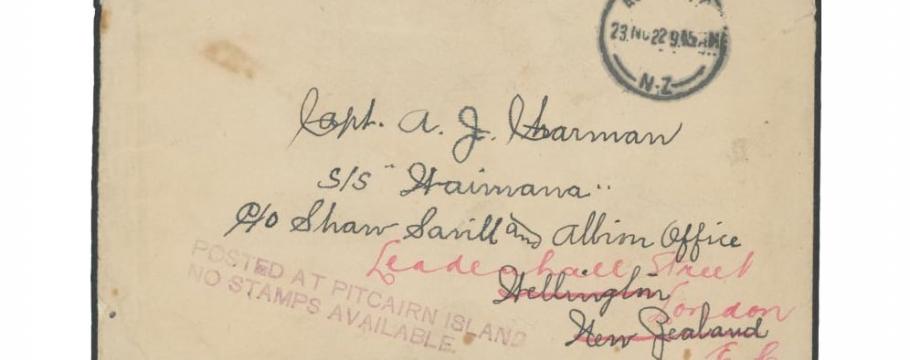
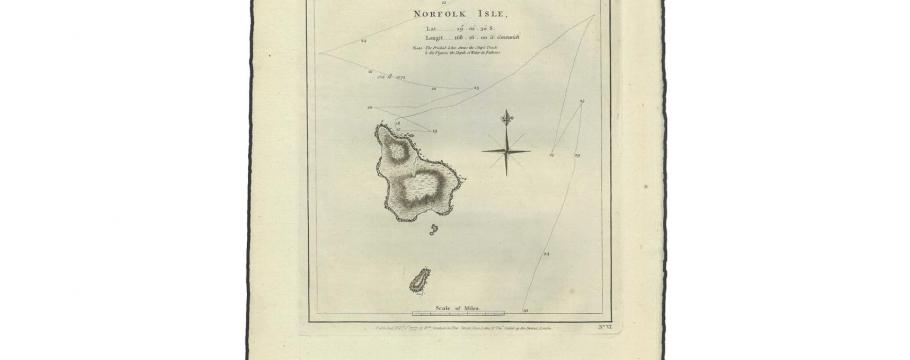
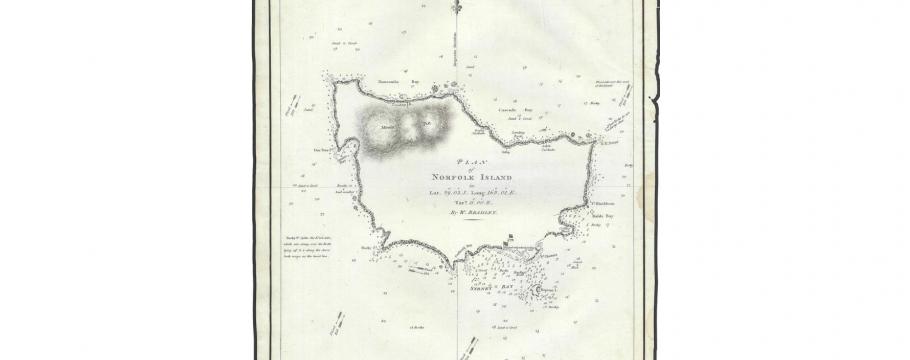
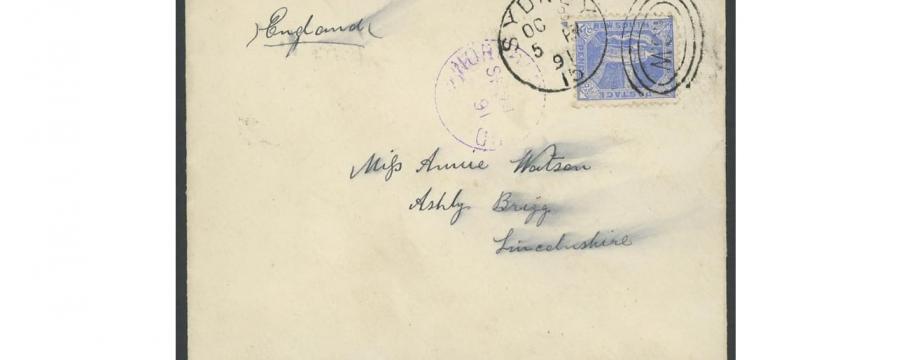
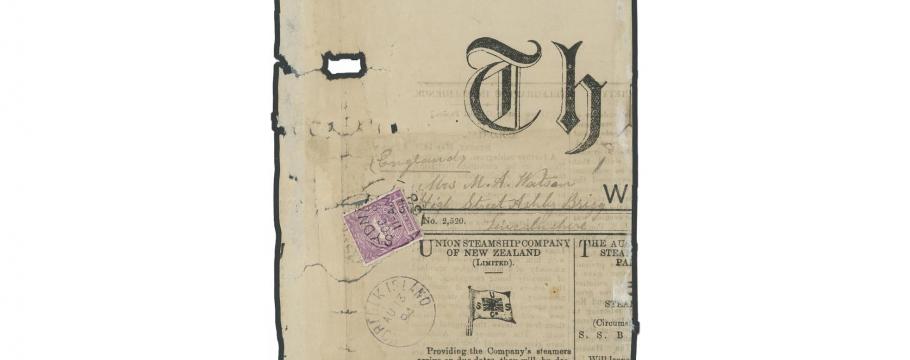
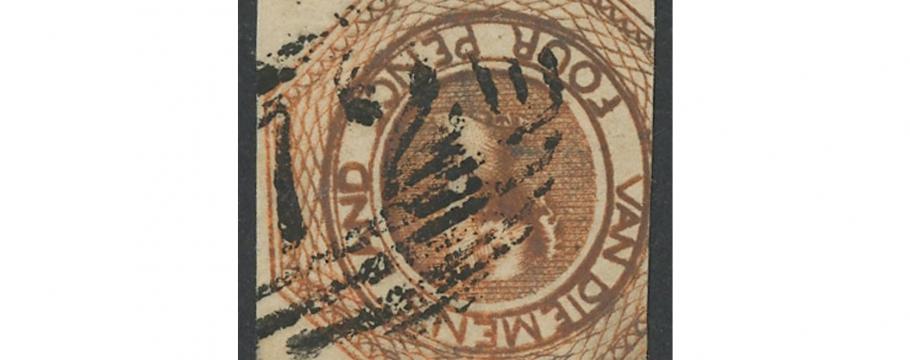
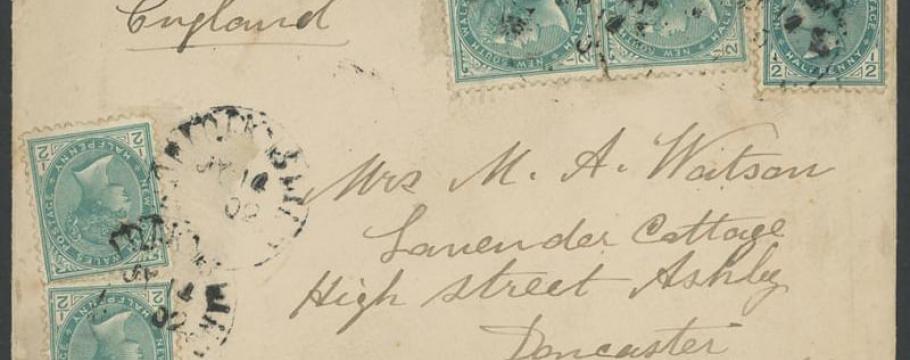
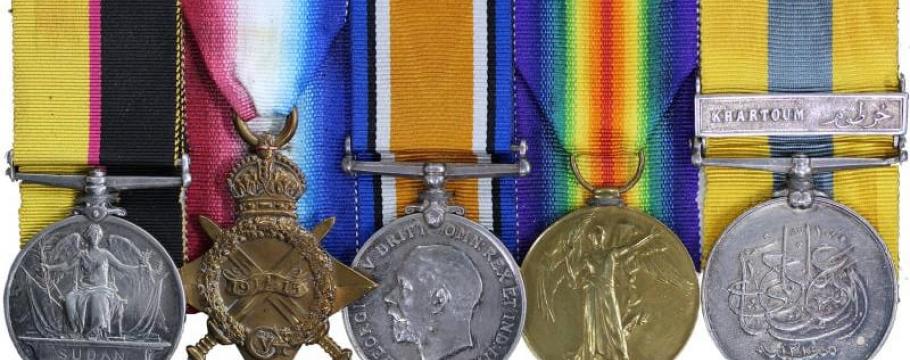
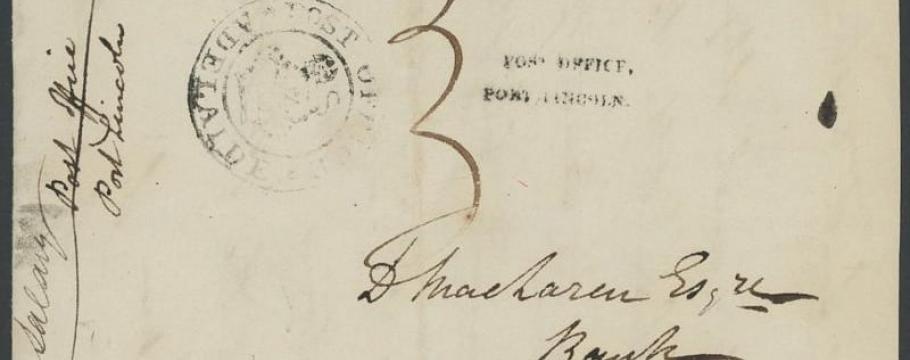
Postal history auction a tribute to Australia's penal origins
Author: Richard Brewster | Posted: 21st November, 2023
An impressive postal history collection up for auction in Melbourne inextricably links the former Australian penal colony of Norfolk Island and Pitcairn Island, home to survivors of the infamous 1789 mutiny on the British ship HMAV Bounty and their descendants.
Under the leadership of acting lieutenant Fletcher Christian, the mutineers had commandeered the ship from Captain William Bligh who, with several of his loyal crew, managed to sail the small boat they were set adrift in to Indonesia. Bligh later became an early Governor of New South Wales.
Belonging to David Murray Brown, the collection is part of Abacus Auctions three-day sale of stamps, postal history, medals, coins, banknotes, sporting memorabilia and other collectables from 11am Wednesday December 6 until Friday December 8 at 29 Hardner Road, Mount Waverley.
The two islands close connection was forged in 1856 when all 163 Pitcairn residents were transferred to Norfolk Island, an isolated rock between New Zealand and New Caledonia, after they had outgrown their former home.
Eighteen months later, 16 returned to Pitcairn followed in 1864 by 27 others.
Abacus postal history specialist Gary Watson has described much of the Pitcairn Island collection as the best he has seen in 20 years.
“Because there was no postage, it was a very primitive system and, until 1920, mail to and from the island relied on passing ships,” he said.
“After that, rubber hand stamps were used to signify that the letter had been posted at Pitcairn Island and that there were no stamps available.”
With the support of both the administrative British and New Zealand Governments, this acceptance of unstamped mail continued until March 15, 1926 when the concession was withdrawn.
Brown’s Pitcairn collection includes a circa 1775 map (lot 3813) showing the incorrect longitude reading when discovered by Philip Carteret aboard HMS Swallow – allowing the Bounty mutineers to remain undiscovered for 18 years from 1790 to 1808. It also includes postal history examples from 1922 to 1926 and until 1972.
Typical of the early rubber-stamped versions are lot 3815, a 1922 letter addressed to a Captain A.J. Charman aboard S/S Itaimana, one to a Mrs G.H. Cockell in Maryport, England, (lot 3817) and a third to Mr Warren, Ship’s Writer, on the RMS Remuera (lot 3818).
Norfolk Island was set up as a British penal colony on March 6, 1788 – barely two months after Captain Arthur Phillip arrived with the First Fleet at Port Jackson in Sydney Cove.
Brown’s Norfolk postal history includes 1777 and 1792 maps of the island (lots 3437 and 3438), a circa 1854 Tasmanian stamp used at the colony (lot 3441) and letters dating back to 1891.
Until November 1, 1856, the penal colony was administered from Hobart when the British appointed the New South Wales governor the responsible official.
Between 1855 and 1885, there was no post office on the island, with mail delivered by passing ships, until one was finally opened and administered from Sydney.
A Mrs Annie Watson from Lincolnshire features prominently in the Norfolk postal history with two rare letters (lots 3442 and 3443) and a large piece dated June 16, 1894 from the Fiji Times (lot 3444) – the only known pre-20th century usage of a newspaper from the island.
Several aircraft flight covers dating from 1931, 1946 and 1947 (lots 3448-3490) are other interesting items.
A former medical officer with the King’s African Rifles in Kenya and running mate of the first man to run a sub-four-minute-mile – British legend Roger Bannister, Perth’s Dr Cecil Walkley assembled an important collection of medals from various African campaigns including the Second Anglo-Boer War.
His 80 lots in the auction feature medals awarded to Lance Corporal Lowe (lot 4005) for his part in the 1898 charge of the 21st Lancers at Omduran – one of the last full-scale cavalry assaults by the British Army.
With a young Winston Churchill involved, 350 men of the regiment believed they were attacking 700 Muslims – when in fact 2000 tribesmen were concealed in a gully. Three Victoria Crosses were awarded that day – all to troop leaders in Lowe’s B Squadron, one of whom was killed during the charge.
Day one of the sale will largely be devoted to South Australian Dr Don Pearce’s collection of postal history and postal markings not seen on the auction market for at least 50 years.
A major highlight is one of the most important South Australian pre-stamp items dated November 11, 1839 – an envelope addressed to D MacLaren Esqre/Bank/Adelaide (lot 2002) which is the only recorded example of the two-line POST OFFICE/PORT LINCOLN handstamp, sent only a few months after the post office opened.





